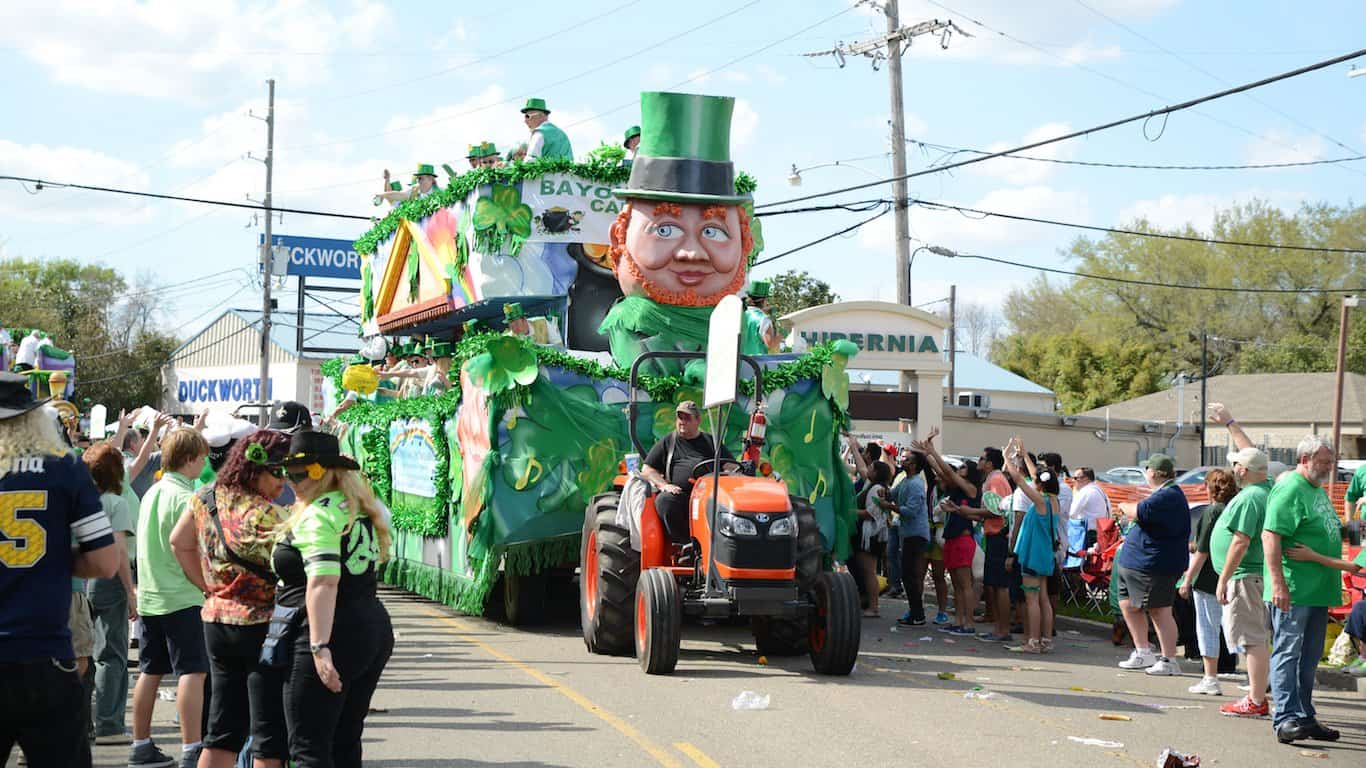St. Patrick’s Day was once a day celebrated in Ireland with feasts and religious services, a day to commemorate Catholicism being brought to Ireland. Times sure have changed and with it, the ways this day is celebrated, not only in Ireland but throughout the world, particularly the United States. As Irish immigration increased in America, this day became more of a celebration of Irish pride and heritage. What went from a religious celebration, morphed into what we know today as a day to party.
As we all know, one does not need to be Irish to celebrate this holiday. It seems as though every year on March 17, everyone is at least a little bit Irish. There are symbols of St. Patrick’s Day that we can’t imagine commemorating the day without – all things green, corned beef and cabbage, and a parade. But, it turns out, none of these originated in Ireland. Even more shockingly, the man whom history knows as St. Patrick is not actually a saint nor is he even from Ireland.
Little is known about St. Patrick, who lived in the fifth century. The information about him comes from just two sources: “Confessio,” his spiritual autobiography, and a letter he wrote condemning the British mistreatment of Irish Christians. Despite the few details, St. Patrick is largely credited with bringing Christianity to Ireland.
From these to more surprising things about the most popular Irish holiday, 24/7 Tempo takes a look at common misconceptions about the patron saint of Ireland and his designated feast day. While there may not be many details on the man with a day named for him, there is more information on the parade held in his honor. The first St. Patrick’s Day parade was held in America, even before it was a country.
The parade in New York City is today considered the world‘s oldest civilian parade and the largest in the United States. It was canceled for the first time in history in 2020 and 2021 due to the COVID-19 pandemic. This year will mark the 261st St Patrick’s Day parade in New York City, with the event taking place on Saturday, March 16th to observe the Sunday sabbath.
More than 150,000 people march every year. The day is mostly a secular holiday in the United States. In Ireland, it’s recognized as a public holiday, of course. It’s also a public holiday in Newfoundland and Labrador, a province of Canada, and Montserrat in the Caribbean.
Almost 35 million Americans have Irish heritage, more than seven times the entire population of Ireland itself. But on St. Patrick’s Day, many others are Irish — about 127 million Americans mark the holiday. Many will be having an Irish breakfast or other meal traditionally associated with Ireland — here are 20 Irish foods explained just in time for St. Patrick’s Day.
Here are 20 lesser-known facts about St. Patrick’s Day.
St. Patrick was born in Britain, not Ireland

The exact birthplace of St. Patrick is not known, but what is certain is that it wasn’t Ireland. He was born in what is now Great Britain, either England, Scotland, or Wales. According to his own autobiography, he was from Bannavem Taberniae, which might be Banwen in Neath Port Talbot in Wales. The village actually holds a service in St. Patrick’s honor every year.
Patrick was a slave in Ireland
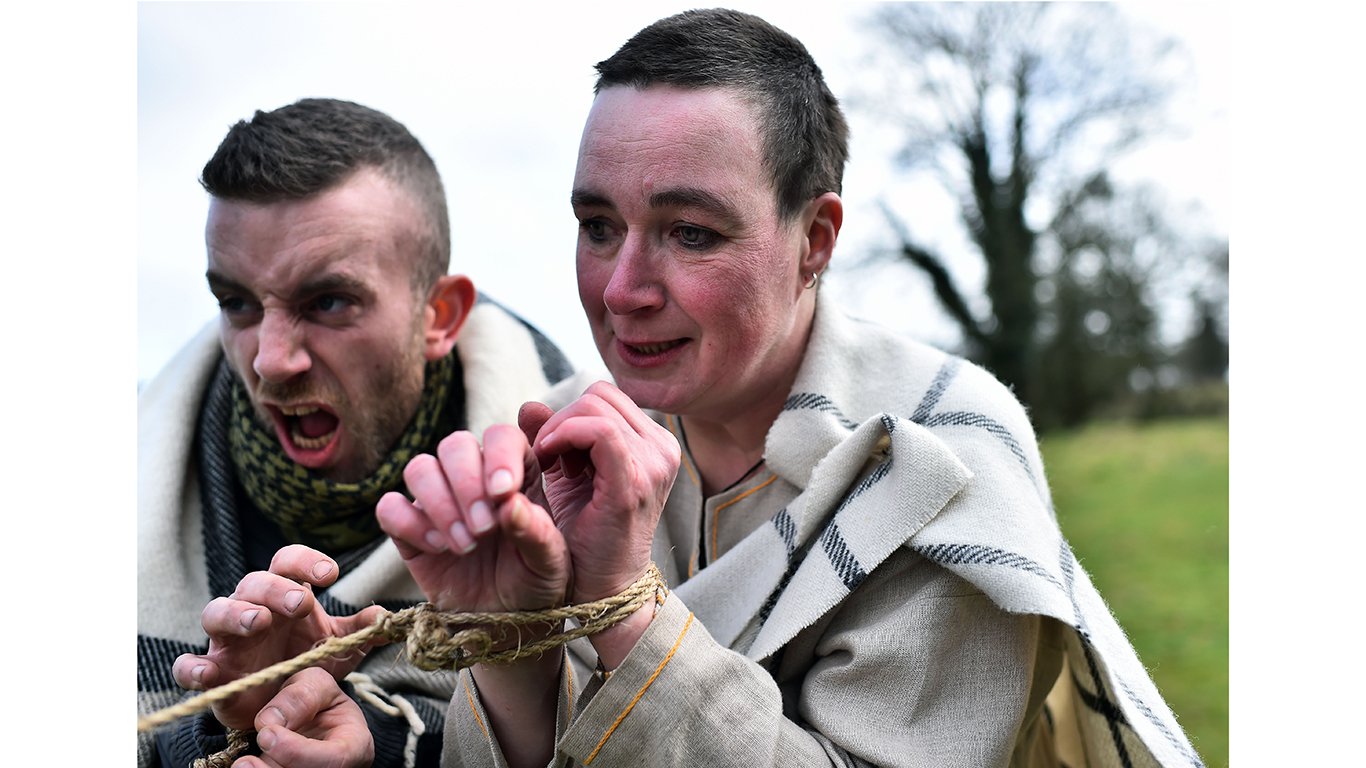
The first time St. Patrick stepped foot in Ireland was when he was 16 and brought there as a slave. Irish raiders kidnapped him from his father’s home. He worked as a herdsman for six years. This is when he became religious. He turned to faith to keep him strong. St. Patrick later wrote that God spoke to him, telling him how to escape, and that is what he did.
His name was not even Patrick
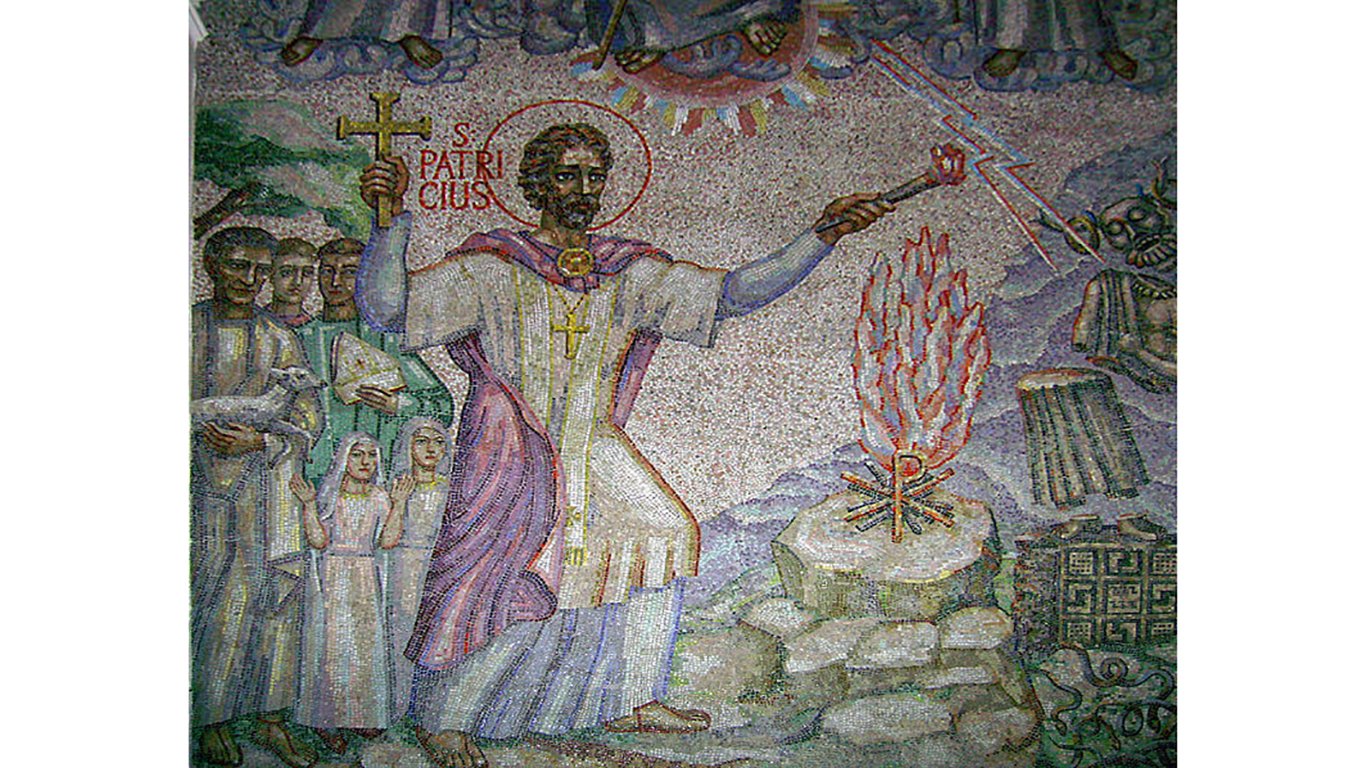
St. Patrick was born Maewyn Succat (although some historians disagree) around 386 A.D. into a rich Roman family. His father was a deacon, and his grandfather, also a clergy member, served during the reign of Constantine the Great, the first emperor to adhere to Christianity. But Maewyn was not religious at all. It’s believed that he took the name Patrick sometime during his religious journeys.
In Ireland, pubs were closed on March 17 until 1970s
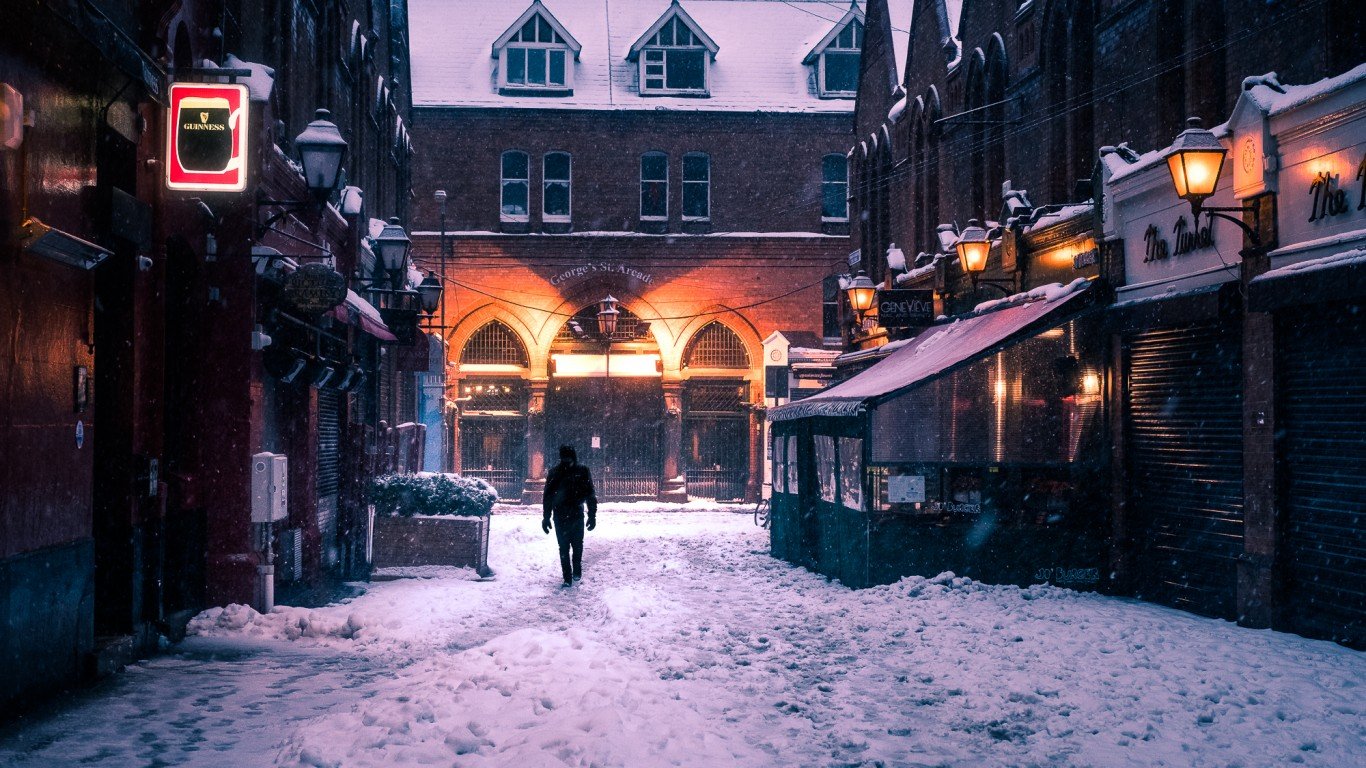
Imagine a holiday that is largely associated with drinking and no place to actually perform this sacred ritual. March 17 in Ireland has been celebrated as a religious feast day, marking the death of the nation’s patron saint. As a sign of respect, there was no drinking. Irish law banned pubs from opening on that day until the 1970s. Maeve Binchy, an Irish novelist, at that time, called Dublin “the dullest place on Earth to spend St. Patrick’s Day.”
March 17 is the day of his death

Usually, the date on which a person is celebrated for his or her achievements or significant contributions to a country is his or her birthday, or the anniversary of another event to be celebrated. For example, Presidents’ Day is George Washington’s birthday. But this is not the case for the Feast of St. Patrick. March 17 is the day on which he died.
He paid a lot of bribes to stay safe

Converting the Irish to Christianity was not an easy task. Unlike the rest of Europe, people didn’t live in towns or very close to one another, and St. Patrick had to travel long distances. Borders between tribes were enforced, and he paid bribes to tribal leaders who would guarantee him safe passage.
The original color was blue
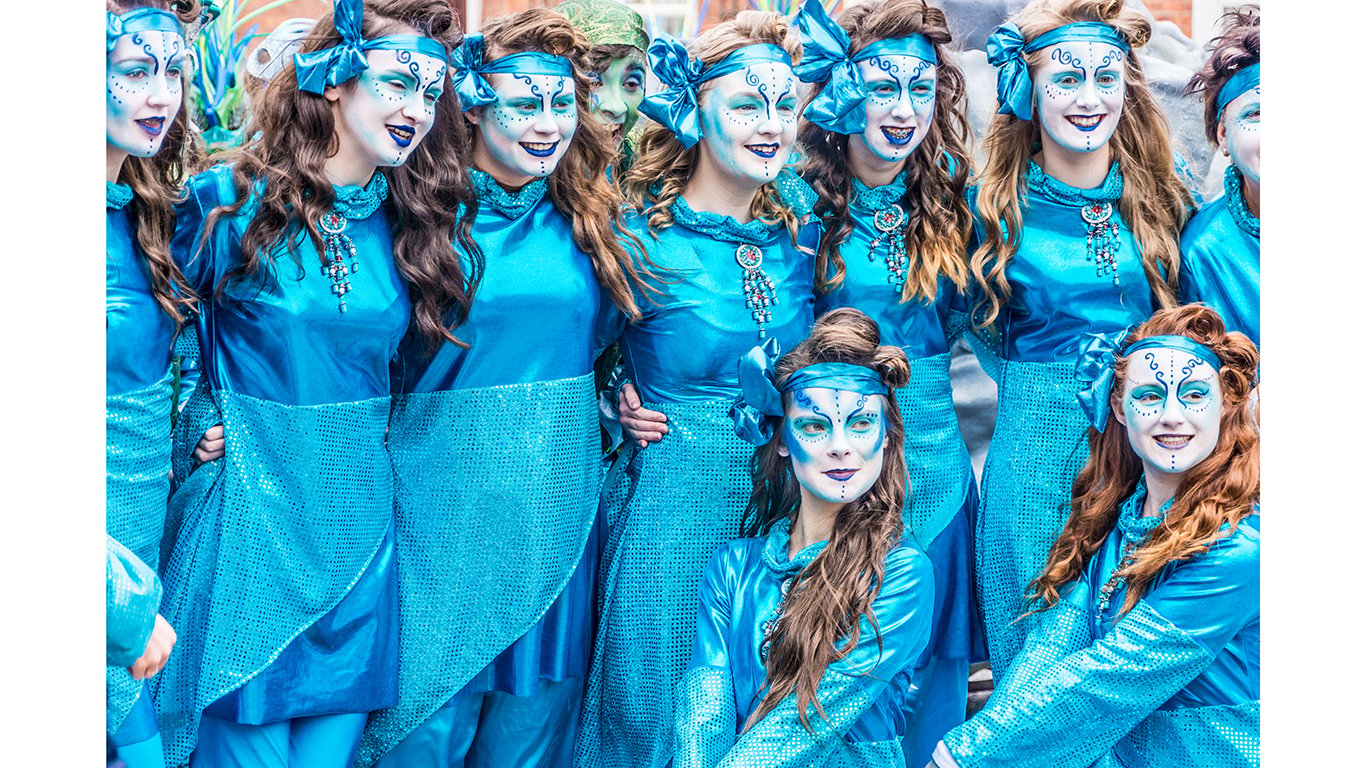
Nowadays, when people think of Ireland and St. Patrick, they think of the color green. However, this is historically incorrect. The original color was blue. The color is still on Irish flags and armbands worn by the Irish Citizen Army, which rose against British oppression in 1916 during the Easter Rising. The shift to green happened in the 19th century when the clover became a national symbol. It’s said that some people had started wearing green even earlier than that.
Ireland never had snakes

The legend is that in the fifth century, St. Patrick forced all snakes out of Ireland into the sea and banished them from the country as he delivered a sermon on a mountaintop. But this story is a myth. There haven’t been any snakes on the Emerald Isle at least since the glacial period because cold-blooded reptiles can’t swim, and it would have been too cold for them to crawl on ice.
Corned beef and cabbage is not the traditional meal

When you think of St. Patrick’s Day, you probably think of corned beef and cabbage. But this is not the case in Ireland. Cattle in Ireland was used for their strength to do farmwork and for their milk, not their meat. Cows were considered a sacred animal and a symbol of the rich. That’s why beef is not a traditional part of the Irish diet. What people today think is Irish corned beef is actually Jewish corned beef cooked in a pot with cabbage and potatoes.
St. Patrick’s Day Parade was first observed in New York City
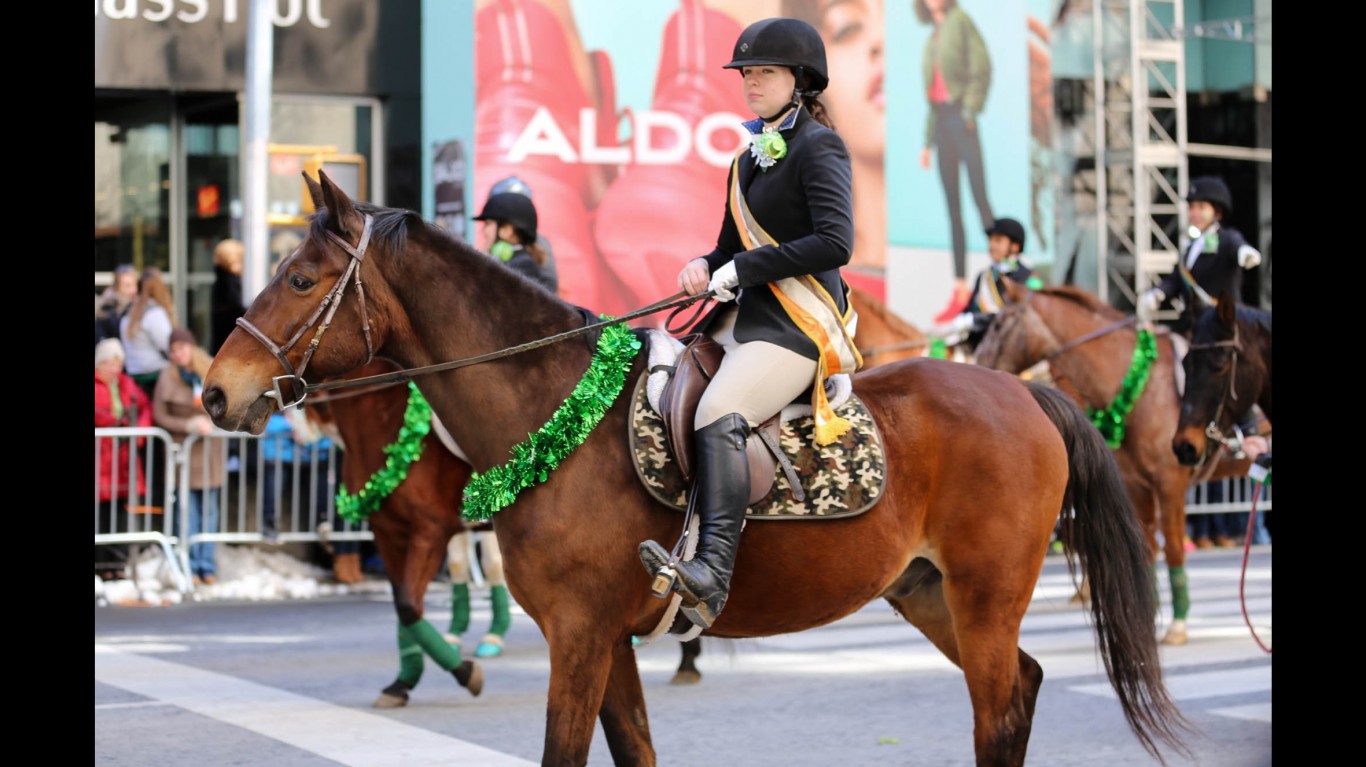
If we are to consider the facts only, the St. Patrick’s Day Parade is more of an American event. The first parade took place in New York City in 1762. (The first celebration by Irish immigrants on American soil was held in 1737 in Boston.) Huge parades were beginning to be held and organized in the 19th century.
He used the shamrock as a metaphor
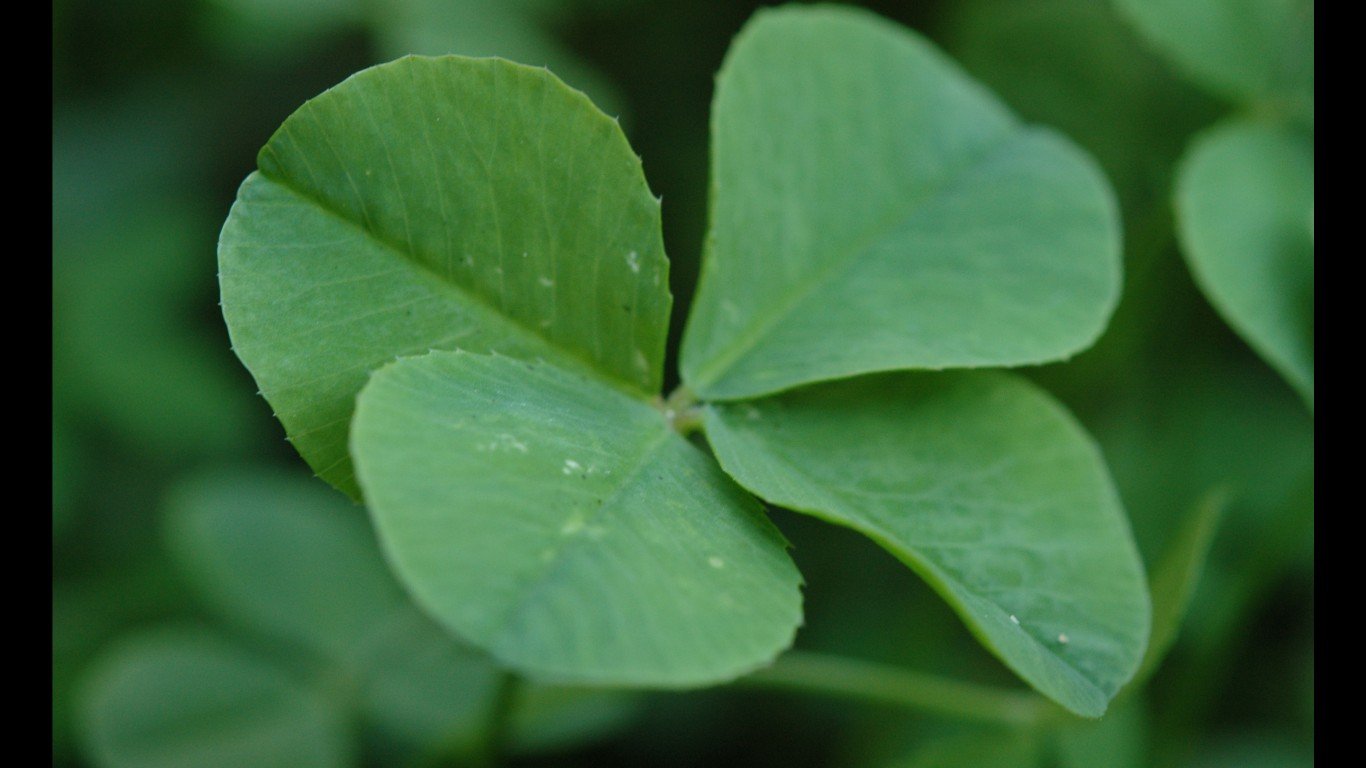
St. Patrick used the shamrock to explain the Holy Trinity and what it means to the pagan Irish. The three leaves symbolized the three people and the one stalk symbolized God. The shamrock is now the national flower of Ireland. In the 19th century, the flower became the symbol of the rebellion against British rule.
The holiday has a political connotation
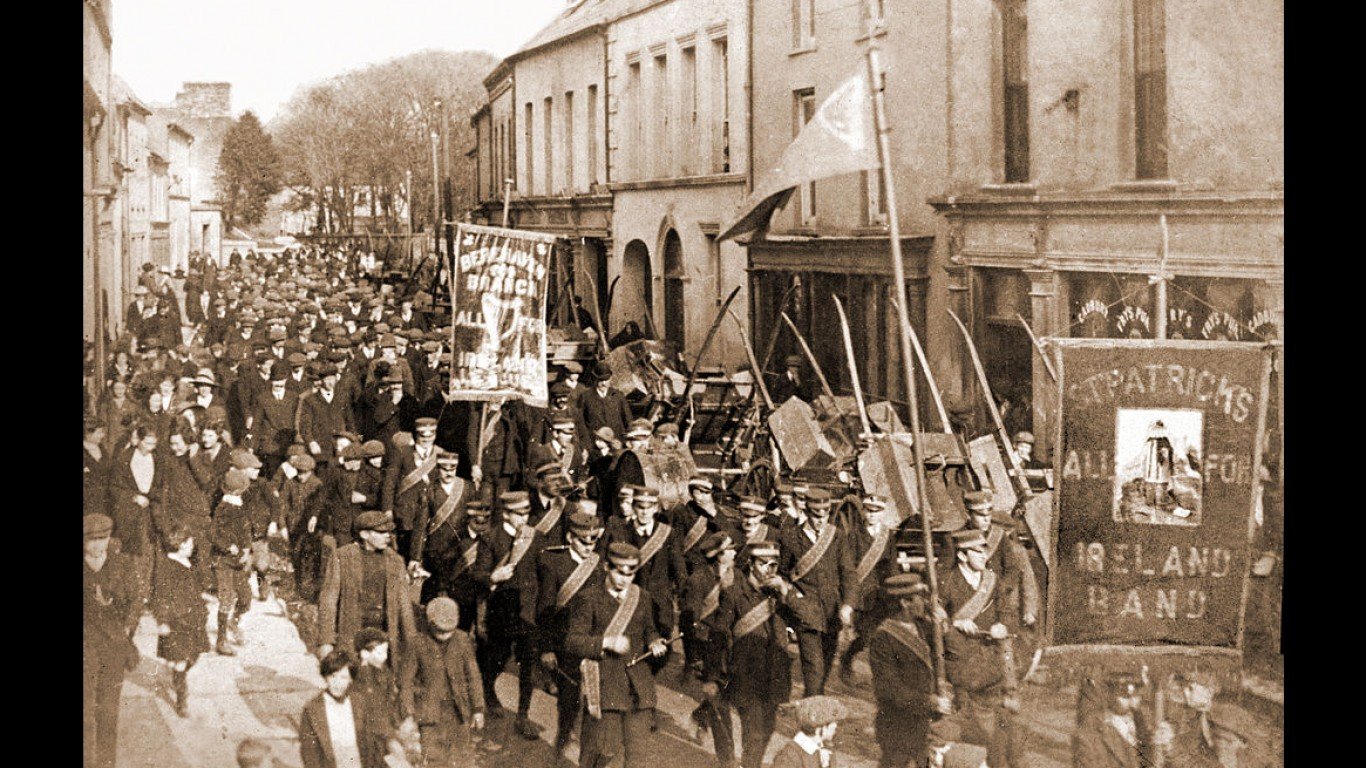
St. Patrick’s Day in the U.S. started as a celebration by Irish immigrants of their origins. But as their numbers grew — especially after the Potato Famine in 1845 when more than a million Irish people fled to America to escape starvation — so did their political power. Irish people started to organize and became known as “the green machine.” They turned the annual parade, which was getting bigger and bigger, into a political opportunity. Candidates running for office became frequent attendees at the parades.
Finding a four-leaf clover may be harder than you think
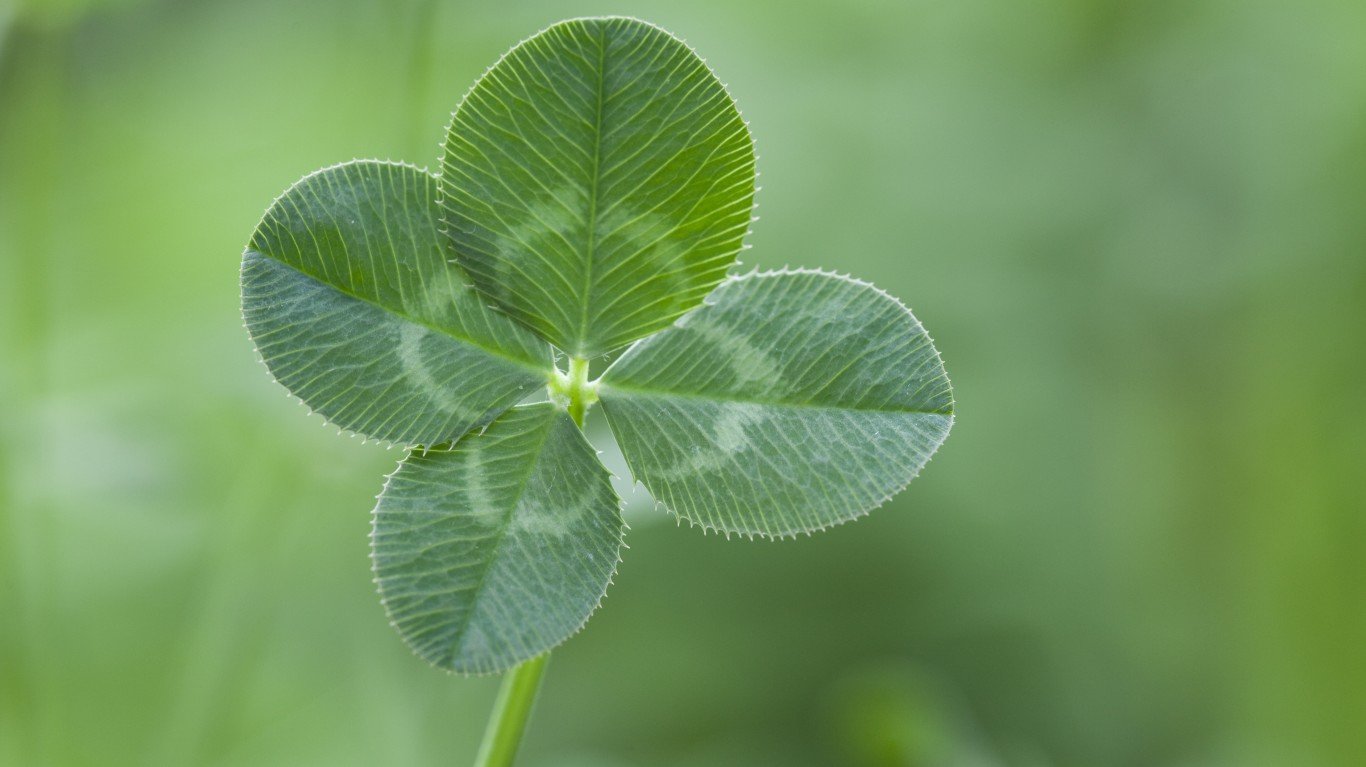
Finding a four-leaf clover is a sign of good luck, which is not as weird as some other superstitions, as only one in 10,000 people is likely to get that fortunate. And if you’re looking out for one, instead of examining all clovers individually, look at them collectively. If there is a four-leaf one, it’ll jump out.
The day is a national holiday in Montserrat in the Caribbean

St. Patrick’s Day has become a world holiday. Irish or not, people from all over the world flock to pubs to at least try a pint of Guinness. It may not come as a surprise that March 17 is a national holiday in Ireland, but did you know that it’s also a holiday in Montserrat, a British Caribbean dependency? People will have the Monday after the holiday off. Irish people lived there before enslaved Africans were brought to the Island in the 17th century.
St. Patrick is also the patron saint of Nigeria
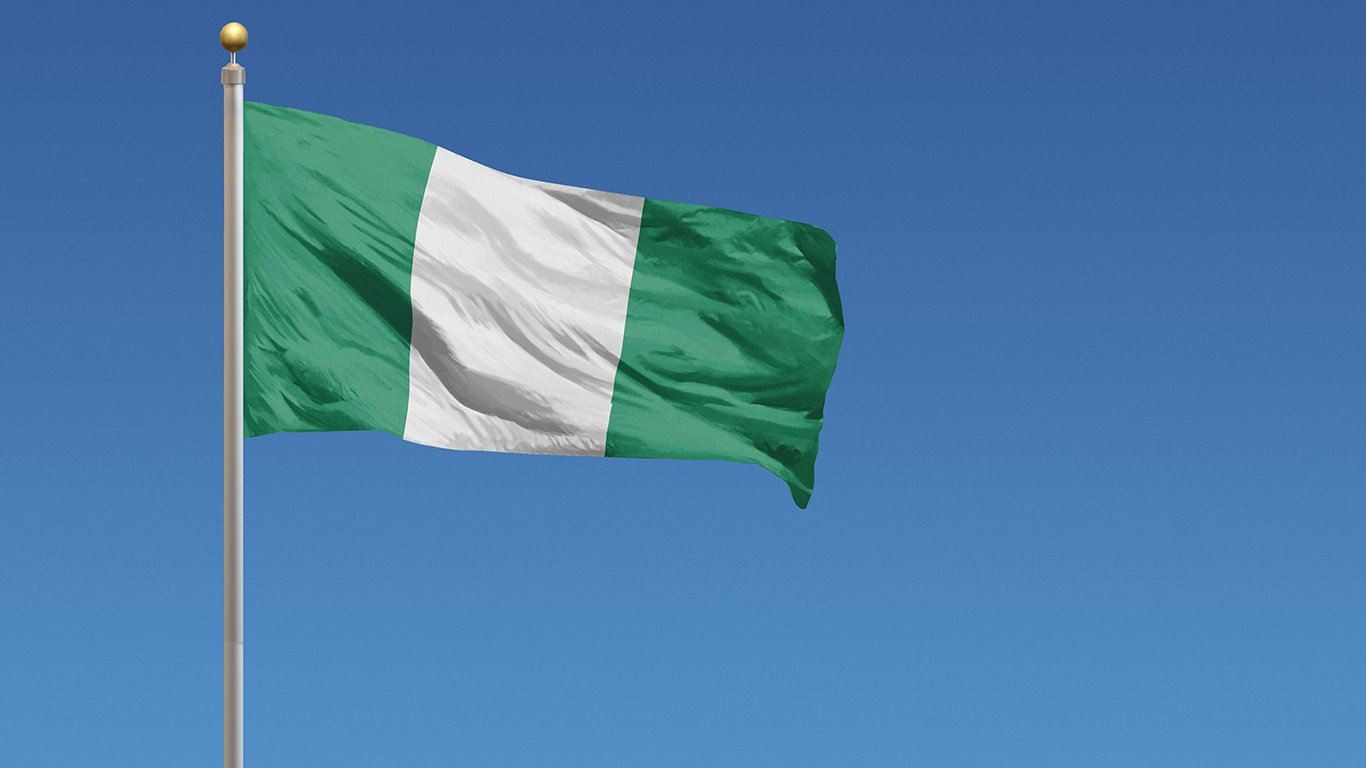
Irish people have a long history in Nigeria. It goes back more than a century, when Roger Casement, an Irish nationalist who sympathized with locals living under colonial rule, served as a British consular officer in southeastern Nigeria. When Ireland opened its embassy in Lagos in 1961, Irish bishops in Nigeria named St. Patrick as the country’s patron.
The largest parade in the southern hemisphere is in Sydney

St. Patrick’s Day parade in Sydney, Australia, is among the largest such events in the world — certainly the largest in the southern hemisphere. More than 80,000 people gather to mark the occasion. The Australian parade is the only one outside Ireland that is sponsored, at least in part, by the Irish government.
Some parades are under 100 yards
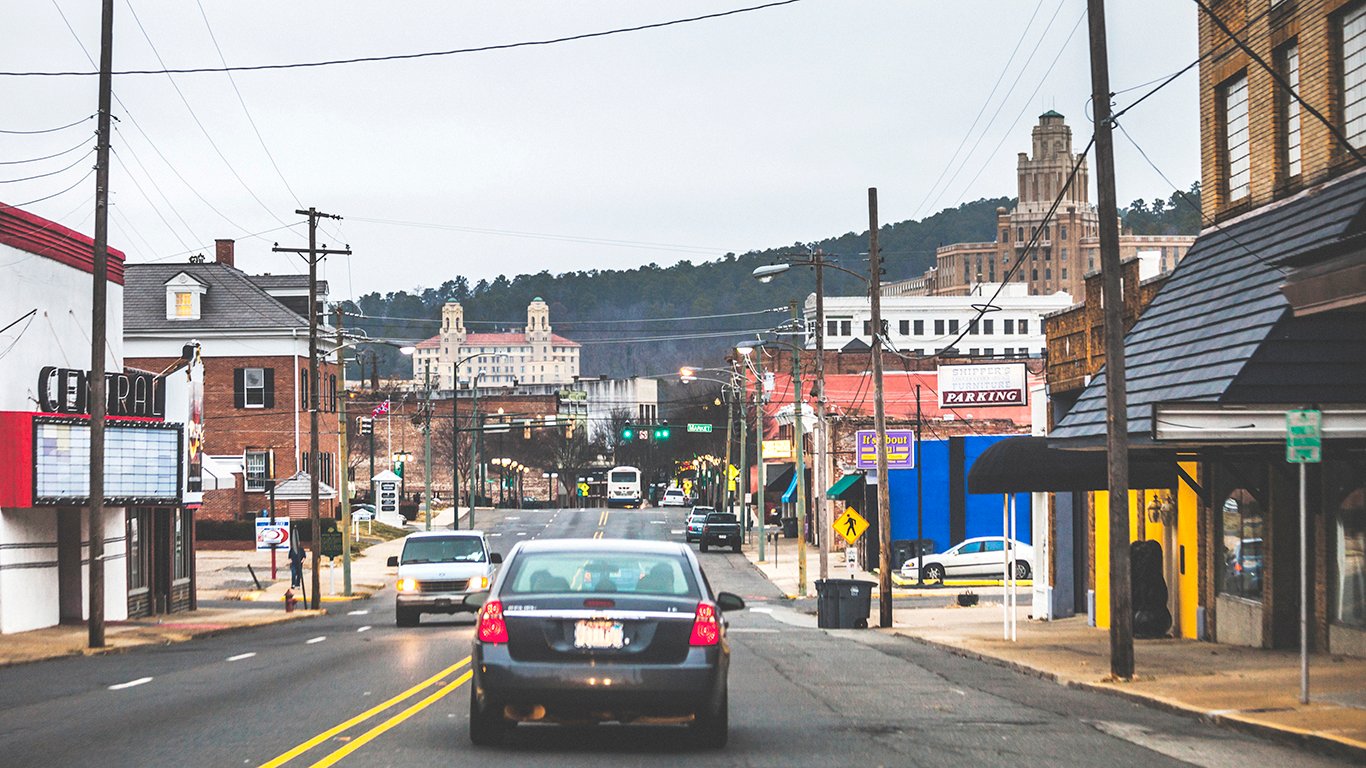
The shortest St. Patrick’s Day parade takes place in Hot Springs National Park, Arkansas. It’s just 98 feet long, which means the parade is over in just about 10 minutes, even if you walk slowly. There is also a footrace, which might be the shortest in the world as well — just 299 feet. And another record: The race ends at O’Kelley’s Pub, the biggest inflatable Irish pub in the world (here are the best Irish bars in every state).
People spend more than $250 million on beer on the day
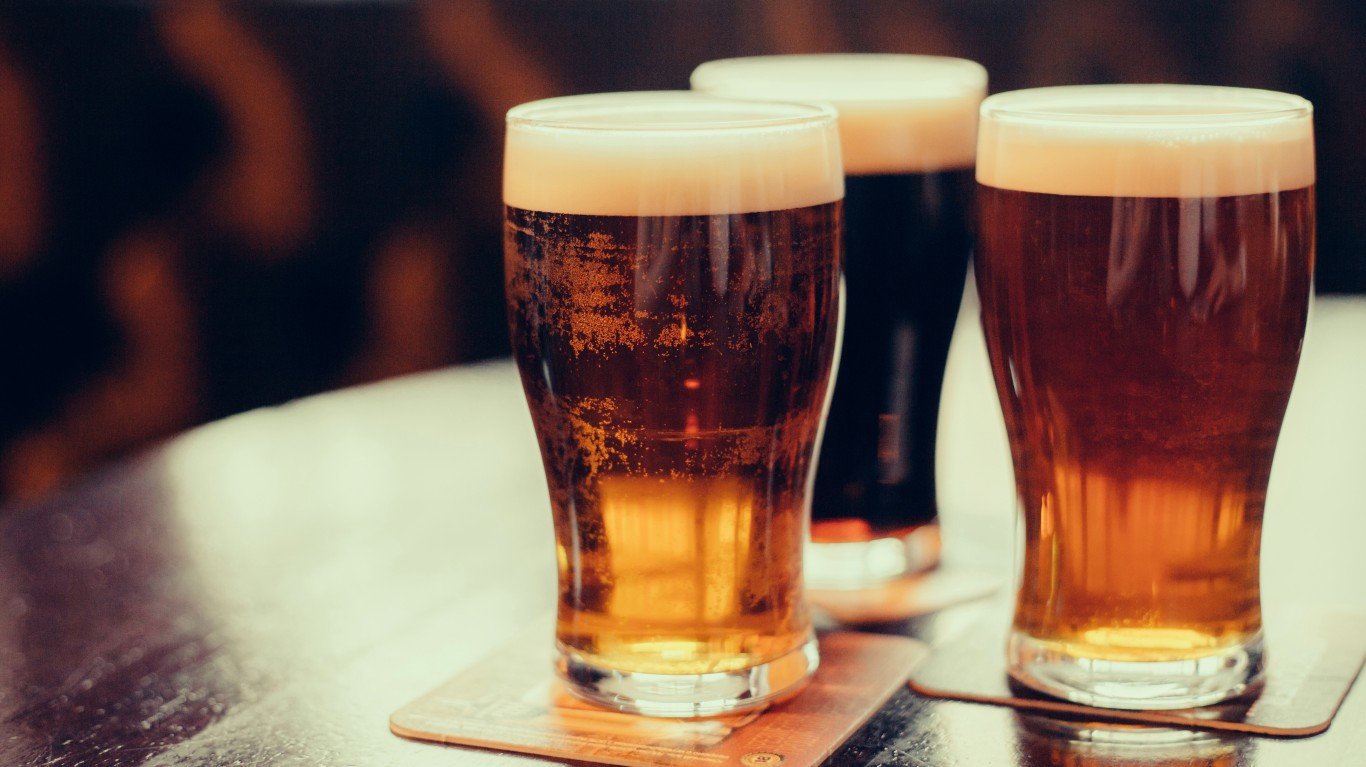
Americans spend about $250 million on beer on St. Patrick’s Day. A fifth of adults have a pint on March 17 every year. Worldwide, about 5.5 million pints of Guinness, one of the most popular beers in America, are consumed a day; on St. Patrick’s Day, however, that number more than doubles to 13 million.
St. Patrick is not officially a saint
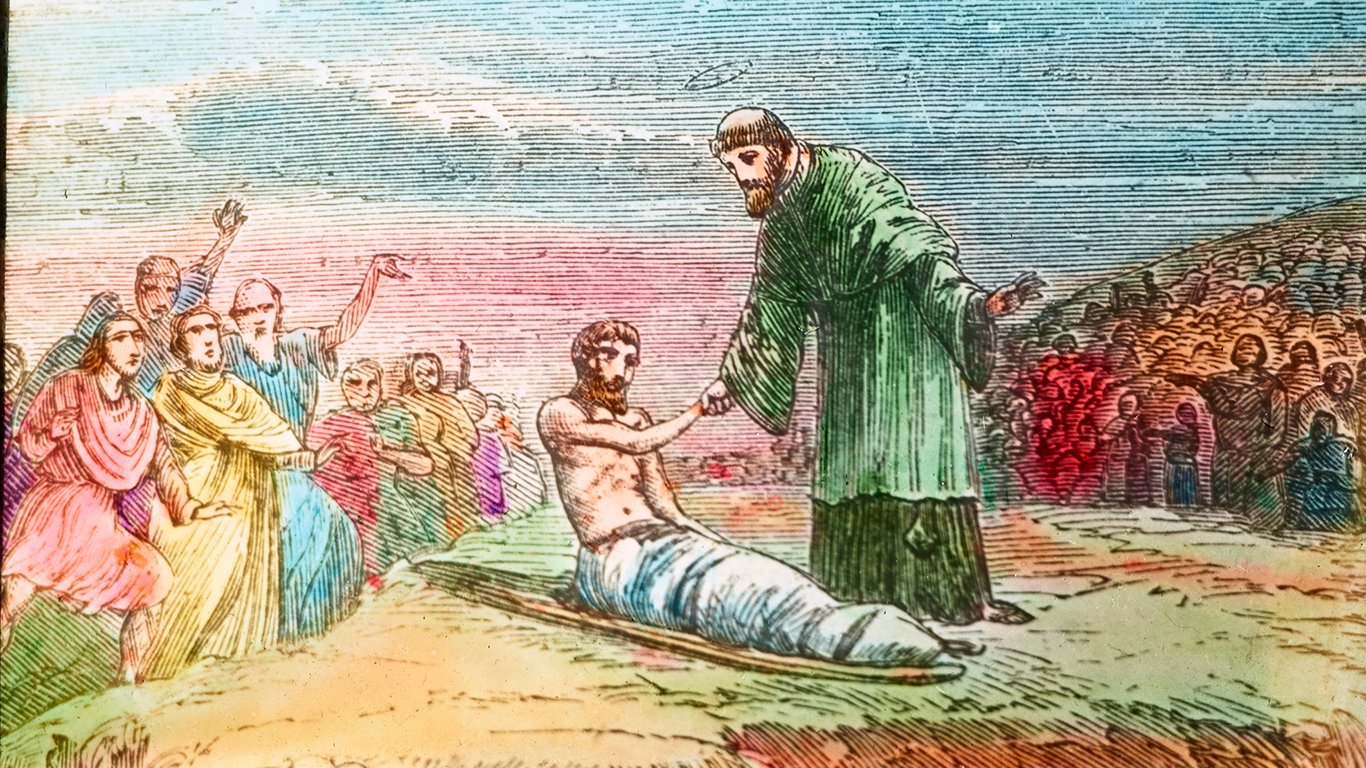
St. Patrick was never actually canonized, which means that, technically, he is not a saint. He died long before a formal process of canonization was even created, which happened in the 12th century.
The first parade in Belfast was held in 1998

The first ever St. Patrick’s Day parade in Ireland took place in 1931, but the event didn’t make its way to neighboring Northern Ireland, which is part of the United Kingdom, until fairly recently — 1998. And it happened in Belfast, a pro-British Protestant city. About 10,000 people marched. And while we are on the subject of marches, next read about women’s marches that have shaped America.
